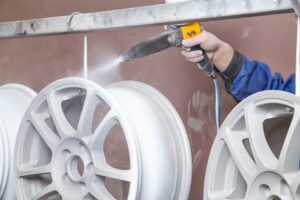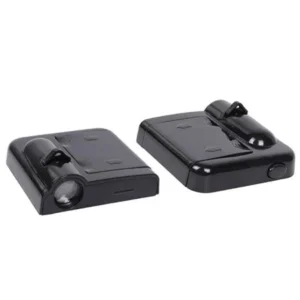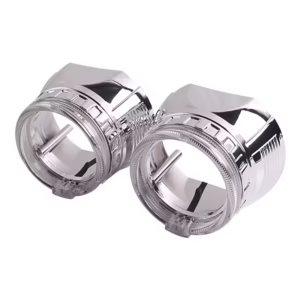Introduction
In the realm of car care, protecting the paintwork is paramount to maintaining both the aesthetic appeal and the value of a vehicle. One of the most effective ways to safeguard your car’s exterior is through ceramic coating. This comprehensive guide explores every facet of ceramic coating, from its benefits and application process to maintenance tips and common misconceptions.
What is Ceramic Coating?
Ceramic coating is a liquid polymer that chemically bonds to a vehicle’s factory paint, creating a protective layer. This innovative technology has transformed car care by providing long-lasting protection and an enhanced glossy finish that outperforms traditional waxing.
How Ceramic Coating Works
Ceramic coatings are typically made from silicon dioxide (SiO2), which reacts with the car’s paint surface to form a semi-permanent bond. This bond creates a hydrophobic (water-repellent) layer that resists environmental contaminants, UV rays, and minor scratches. The result is a durable, glossy shield that enhances the car’s appearance and makes maintenance easier.
Types of Ceramic Coatings
There are two primary types of ceramic coatings: professional-grade and DIY (do-it-yourself) coatings. Professional-grade coatings offer superior durability and longevity, often requiring specialized equipment and skills for application. DIY coatings, while more accessible, may not provide the same level of protection and typically require more frequent reapplications.
Benefits of Ceramic Coating
The advantages of ceramic coating are numerous:
- Longevity: Ceramic coatings can last several years, significantly outlasting traditional waxes and sealants.
- Protection: They shield the paint from UV rays, chemical stains, bird droppings, and other environmental hazards.
- Aesthetic Enhancement: The coating provides a deep, glossy finish that enhances the car’s appearance.
- Ease of Maintenance: The hydrophobic nature of ceramic coatings makes washing the car easier and more effective.
Comparing Ceramic Coating to Wax
When comparing ceramic coating to traditional wax, several key differences emerge:
- Durability: Ceramic coatings last much longer than wax, which needs to be reapplied every few months.
- Protection Levels: Ceramic coatings offer superior protection against UV rays, chemicals, and minor scratches.
- Cost: While ceramic coatings are more expensive upfront, their long-term benefits often justify the investment.
- Maintenance: Ceramic coatings reduce the need for frequent waxing and provide a consistent, high-gloss finish with minimal effort.
Preparing Your Car for Ceramic Coating
Proper preparation is crucial for the success of a ceramic coating application. This involves several steps:
- Cleaning: Thoroughly wash the car to remove all dirt and grime.
- Decontamination: Use a clay bar to remove embedded contaminants from the paint surface.
- Paint Correction: Address any paint imperfections, such as scratches or swirl marks, to ensure a smooth and flawless finish.
Application Process
The application of ceramic coating can be done professionally or as a DIY project. Here is a step-by-step guide for both methods:
Professional Application
- Inspection: A professional will inspect the paint for imperfections.
- Preparation: The car is washed, decontaminated, and polished.
- Application: The ceramic coating is applied in a controlled environment to ensure optimal conditions.
- Curing: The coating is left to cure for the recommended time, usually 24-48 hours.
DIY Application
- Preparation: Follow the same preparation steps as for professional application.
- Application: Apply the coating using the provided applicator pad, ensuring even coverage.
- Buffing: After a specified time, buff the surface with a microfiber cloth to remove excess coating.
- Curing: Allow the coating to cure as per the manufacturer’s instructions.
Tools and Materials Needed
For a successful ceramic coating application, you will need:
- High-quality ceramic coating product
- Applicator pads
- Microfiber towels
- Clay bar
- Polishing compounds and pads
- Isopropyl alcohol (IPA) solution
- Car shampoo and wash mitt
Curing Time and Conditions
The curing time for ceramic coating varies depending on the product and environmental conditions. Optimal curing conditions include a temperature range of 50-70°F (10-21°C) and low humidity. During the curing period, avoid exposing the car to water, dust, or other contaminants.
Maintenance of Ceramic Coating
Maintaining a ceramic-coated car involves regular, gentle washing and avoiding harsh chemicals. Use a pH-neutral car shampoo and soft wash mitts to prevent scratches. Avoid automatic car washes and instead opt for hand washing to preserve the coating’s integrity.
Common Mistakes to Avoid
To ensure the longevity and effectiveness of your ceramic coating, avoid these common mistakes:
- Applying the coating on a dirty or contaminated surface
- Skipping the paint correction step
- Using abrasive cleaners or tools during maintenance
- Ignoring the manufacturer’s instructions for curing time and conditions
Myths and Misconceptions
Ceramic coating is often surrounded by myths and misconceptions. Some common ones include:
- Myth: Ceramic coating makes the car scratch-proof.
- Fact: While it offers excellent protection, it is not entirely scratch-proof.
- Myth: Once applied, no further maintenance is needed.
- Fact: Regular maintenance is essential to preserve the coating’s effectiveness.
- Myth: Ceramic coating is a one-time application.
- Fact: Although long-lasting, it may require reapplication after several years.
Cost Analysis
The cost of ceramic coating can vary widely based on factors such as the quality of the product, the size of the vehicle, and whether the application is professional or DIY. Professional applications can range from Kshs. 5000 to Kshs. 2,0000, while DIY kits are typically between Kshs. 500 and Kshs1500.
DIY vs. Professional Application
Choosing between DIY and professional ceramic coating depends on several factors:
- Skill Level: Professional application ensures expert results, while DIY requires careful attention to detail.
- Cost: DIY is more affordable but may lack the durability and finish of a professional job.
- Time: Professional application is quicker, with the entire process handled by experts.
Ceramic Coating for Different Vehicles
Ceramic coatings are not limited to cars. They are also beneficial for:
- Motorcycles: Protects paint and chrome parts.
- Boats: Shields against saltwater and UV damage.
- Aircraft: Reduces maintenance and improves aerodynamics.
Environmental Impact
Ceramic coatings are generally considered eco-friendly. They reduce the need for frequent washing and the use of chemical cleaners, thereby minimizing water and chemical waste.
Frequently Asked Questions
Can ceramic coating be applied over vinyl wraps?
Yes, ceramic coating can be applied over vinyl wraps to enhance protection and longevity.
Does ceramic coating prevent water spots?
It helps reduce water spots by making the surface hydrophobic, but it doesn’t completely eliminate them.
How long does ceramic coating last?
Professional-grade coatings can last 2-5 years, while DIY options typically last 1-2 years.
Can ceramic coating be removed?
Yes, it can be removed through polishing or using specialized chemical removers.
Is ceramic coating worth the cost?
For most car owners, the long-term protection and aesthetic benefits justify the initial investment.
What surfaces can ceramic coating be applied to?
Ceramic coating can be applied to paint, glass, wheels, and plastic trim.
Real-Life Testimonials
Many car owners have experienced the transformative benefits of ceramic coating. John, a car enthusiast, shares, “After applying ceramic coating, my car’s paint looks as good as new, and maintenance has become a breeze.” Sarah adds, “The hydrophobic effect is amazing! Water and dirt just slide off.”
Conclusion
Ceramic coating offers a remarkable solution for car paint protection, combining durability, ease of maintenance, and aesthetic enhancement. Whether you choose a professional application or a DIY approach, understanding the process and benefits of ceramic coating will help you make an informed decision and keep your vehicle looking its best for years to come.




